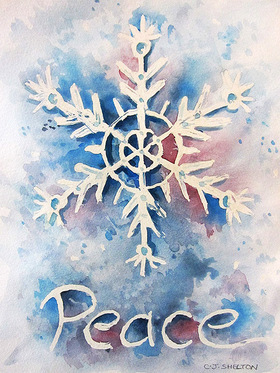About Madhubani Marriage Mandala Art
 Perhaps the best known genre of Indian folk paintings are the Mithila (also called Madhubani) paintings from the Mithila region of Bihar state. For centuries the women of Mithila have decorated the walls of their houses with intricate, linear designs on the occasion of marriages and other ceremonies.
Perhaps the best known genre of Indian folk paintings are the Mithila (also called Madhubani) paintings from the Mithila region of Bihar state. For centuries the women of Mithila have decorated the walls of their houses with intricate, linear designs on the occasion of marriages and other ceremonies.
Painting is a key part of the education of Mithila women, culminating in the painting of the walls of the kohbar, or nuptial chamber on the occasion of a wedding. The kohbar ghar paintings are based on mythological, folk themes and tantric symbolism, though the central theme is invariably love and fertility.
The major part of the painting has a circle of yantras representing different gods and goddesses. It is the influence of Tantra on the religious scene. The Kali Yantra, Sri Yantra etc. form the conglomeration of yantras, akin to mandalas, a symbol in Tantric art. Around the yantras are depictions of marriage rituals.
On either side of this central motif are the faces of the bride and the bridegroom. The auspicious kalas, fish and turtle, symbolic of fertility are also painted around the outside of the mandala, as are symbols of prosperity and longevity such as the elephant, tree of life, and bamboo.
The bamboo tree, fish and turtle portrayed in the paintings point to the earthly pleasures which find culmination in marital relationship. The lion expresses male energy and the peacock, the female beauty; the fish and the turtle are symbols of proliferation and fertility.
These kohbar paintings often have a lotus motif pierced by a bamboo shaft representing sexual union of the bride and the bridegroom. Parrots, which represent the lovers, are often painted around the rim of the central lotus mandala.
The lower half of the painting is usually narrative in nature, showing the couple performing various religious ceremonies. Here, too, are painted images of the bridegroom in a palanquin followed by another one carrying the bride to his home.
These kind of kohabar pictures abound on the walls of Madhubani villagers, which are later layered and pictures of other auspicious objects appear once the marriage rituals are over.
The contemporary art of mithila painting was born in the early 1960’s, following the terrible Bihar famine. The women of Mithila were encouraged to apply their painting skills to paper as a means of supplementing their meager incomes. Once applied to a portable and thus more visible medium, the skills of the Mithila women were quickly recognized. The work was enthusiastically bought by tourists and folk art collectors alike. As with the wall paintings, these individual works are still painted with natural plant and mineral-derived colors, using bamboo twigs in lieu of brush or pen.
Over the ensuing forty years a wide range of styles and qualities of Mithila art have evolved, with styles differentiated by region and caste – particularly the Brahmin, Kayastha and Harijan castes. Many individual artists have emerged with distinctive individual styles.




Leave a Reply